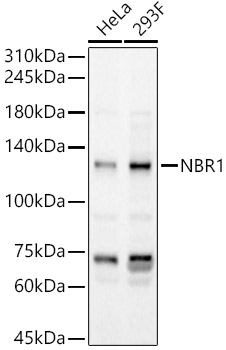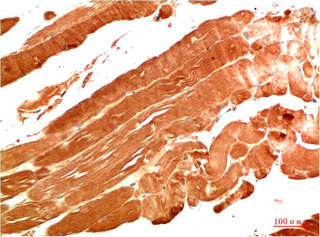NBR1 antibody
GTX114539
ApplicationsWestern Blot, ImmunoHistoChemistry, ImmunoHistoChemistry Paraffin
Product group Antibodies
ReactivityHuman, Mouse
TargetNBR1
Overview
- SupplierGeneTex
- Product NameNBR1 antibody
- Delivery Days Customer9
- Application Supplier NoteWB: 1:500-1:3000. IHC-P: 1:100-1:1000. *Optimal dilutions/concentrations should be determined by the researcher.Not tested in other applications.
- ApplicationsWestern Blot, ImmunoHistoChemistry, ImmunoHistoChemistry Paraffin
- CertificationResearch Use Only
- ClonalityPolyclonal
- Concentration1 mg/ml
- ConjugateUnconjugated
- Gene ID4077
- Target nameNBR1
- Target descriptionNBR1 autophagy cargo receptor
- Target synonyms1A1-3B, IAI3B, M17S2, MIG19, next to BRCA1 gene 1 protein, B-box protein, cell migration-inducing gene 19 protein, membrane component, chromosome 17, surface marker 2 (ovarian carcinoma antigen CA125), migration-inducing protein 19, neighbor of BRCA1 gene 1
- HostRabbit
- IsotypeIgG
- Protein IDQ14596
- Protein NameNext to BRCA1 gene 1 protein
- Scientific DescriptionThe protein encoded by this gene was originally identified as an ovarian tumor antigen monitored in ovarian cancer. The encoded protein contains a B-box/coiled coil motif, which is present in many genes with transformation potential, but the function of this protein is unknown. This gene is located on a region of chromosome 17q21.1 that is in close proximity to tumor suppressor gene BRCA1. Three alternatively spliced variants encoding the same protein have been identified for this gene. [provided by RefSeq]
- ReactivityHuman, Mouse
- Storage Instruction-20°C or -80°C,2°C to 8°C
- UNSPSC12352203
References
- Ugun-Klusek A, Tatham MH, Elkharaz J, et al. Continued 26S proteasome dysfunction in mouse brain cortical neurons impairs autophagy and the Keap1-Nrf2 oxidative defence pathway. Cell Death Dis. 2017,8(1):e2531. doi: 10.1038/cddis.2016.443Read this paper





